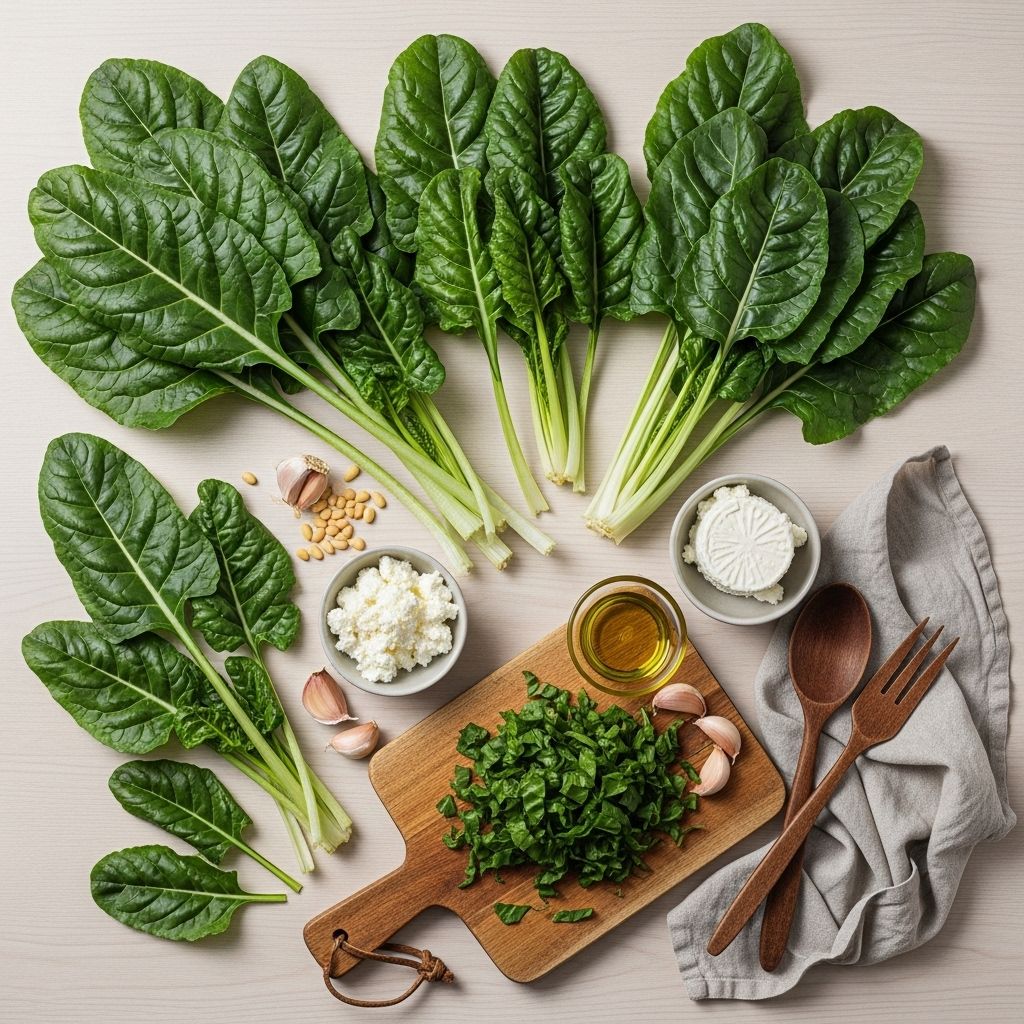Unlocking Silverbeet: Benefits, Uses, and Taste
From tender stalks to bright leaves, this superfood adds texture and depth to any recipe.

Introduction to Silverbeet (Chard)
Silverbeet, commonly known as Swiss chard, is a leafy green vegetable belonging to the beet family (Beta vulgaris). Despite its name, it is not from Switzerland but rather has roots tracing back to the Mediterranean region, particularly Sicily. It is often mistaken for spinach but is more closely related to beets and quinoa. Silverbeet is renowned for its vibrant colors, ranging from green to red, yellow, or orange, and its thick, brightly colored stalks.
Origin and History
The term “Swiss” was added to distinguish it from French spinach varieties in 19th-century seed catalogues. Historically, Swiss chard has been cultivated for centuries, with evidence suggesting its use dates back to ancient Greece. It is a staple in Mediterranean cuisine and is popular worldwide for its nutritional value and versatility in cooking.
Benefits of Silverbeet
Silverbeet is a nutritional powerhouse offering a wealth of vitamins, minerals, and antioxidants. It is an excellent source of vitamins A, C, and K, as well as magnesium, potassium, iron, and dietary fiber. The high vitamin K content is crucial for blood clotting and bone health. However, it contains oxalates, which can bind to calcium and interfere with its absorption, so individuals prone to kidney stones or those with oxalate sensitivity may need to limit their intake or cook the chard to reduce oxalate levels.
Nutritional Breakdown
| Nutrient | Quantity per 100g |
|---|---|
| Vitamin A (beta-carotene) | approx. 534 micrograms |
| Vitamin C | approx. 10 mg |
| Vitamin K | approx. 314 micrograms |
| Magnesium | approx. 55 mg |
| Potassium | approx. 920 mg |
| Iron | approx. 1.8 mg |
Uses of Silverbeet
Silverbeet is incredibly versatile in the kitchen. The leaves can be eaten raw in salads when young and tender, or cooked like spinach—sautéed, steamed, or added to soups, stews, and casseroles. The stalks can be prepared similarly to asparagus or used in salads for added crunch and color.
Cooking Methods
- Sautéing: Quickly cooking chopped leaves and stems in a pan with garlic and olive oil enhances their flavor.
- Steaming: Steaming helps retain nutrients and is a gentle way to cook silverbeet without losing its vibrant colors.
- Boiling: Quickly boiling the leaves conserves nutrients by not overcooking them.
Taste Profile of Silverbeet
Silverbeet has a mild, slightly earthy taste, similar to spinach but less bitter. The stalks can add a crunchy texture and a sweet, slightly bitter flavor when cooked. The “Five Color Silverbeet” or “Bright Lights” variety is particularly popular for its array of colors and tender taste.
Five Color Silverbeet (Bright Lights)
This variety is known for its colorful stems—yellow, orange, pink, red, and white—and mild, delicious greens. It is often considered a collection of different varieties rather than a single type. The leaves are best used raw when they are 3 inches long or less to avoid strong flavors.
FAQs
Q: Is silverbeet difficult to grow?
A: Silverbeet is relatively easy to grow. It prefers well-drained soil and can thrive in partial shade, making it suitable for gardens with limited sunlight.
Q: Can I grow silverbeet in containers?
A: Yes, silverbeet grows well in containers. It adds a colorful and nutritious element to any garden or kitchen garden.
Q: How often should I harvest silverbeet?
A: Harvesting silverbeet regularly encourages new growth. Crop the lower leaves to promote continuous production throughout the growing season.
References
- https://www.motherearthgardener.com/plant-profiles/five-color-silverbeet-zmaz16uzhou/
- https://specialtyproduce.com/produce/Rainbow_Chard_14732.php
- https://www.wisdomlib.org/ingredients/swiss-chard
- https://vegangela.com/2011/05/02/swiss-chard-silverbeet/
- https://en.wikipedia.org/wiki/Chard
- https://www.rhs.org.uk/advice/grow-your-own/features/fascinating-facts-chard
- https://foodprint.org/real-food/chard/
- https://www.ibreatheimhungry.com/swiss-chard-silverbeet-superfood/
Read full bio of Sneha Tete












